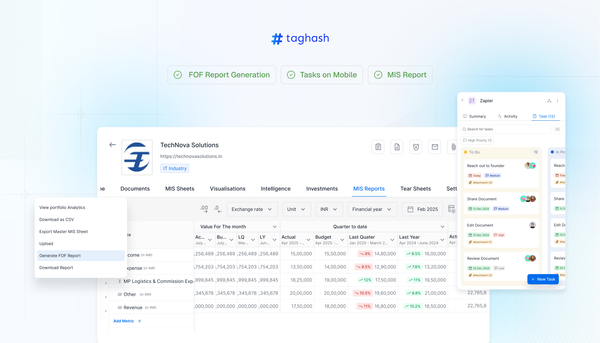Continuation Vehicles in Venture Capital - Structure, Benefits, and Strategic Execution

As market dynamics evolve, fund managers (GPs) and limited partners (LPs) are increasingly leveraging CVs to unlock liquidity while maintaining exposure to promising assets. This article provides an in-depth analysis of continuation vehicles and their structural advantages, challenges, and real-world applications, supported by authoritative insights and market trends.
What Are Continuation Vehicles?
A continuation vehicle is a secondary market structure that allows venture capital firms to transfer select portfolio companies from an existing fund into a new investment vehicle. This approach enables GPs to continue managing high-performing assets beyond the original fund’s term, offering liquidity options to LPs while attracting new investors.
Key Components and Structure
Basic Structure
- The original fund transfers selected portfolio companies into a newly created continuation vehicle.
- Existing LPs have the option to:
- Sell their stakes and exit.
- Roll over their interests into the new vehicle.
- Choose a hybrid approach combining both options.
- New investors can participate in the continuation vehicle.
- The GP retains management control.
Economic Terms
- A new management fee structure is established.
- Carried interest arrangements are reset.
- Fresh capital is allocated for follow-on investments.
- A defined investment period and term are introduced.
Why Venture Capital Firms Use Continuation Vehicles
For Fund Managers (GPs)
Extended Runway for Value Creation
- Enables GPs to optimise exit timing for maximum value realisation.
- Provides additional time to support portfolio companies through critical growth phases.
- Offers an opportunity to capture further upside in high-performing companies.
Portfolio Management Flexibility
- Allows GPs to separate outperforming assets from the broader portfolio.
- Maintains strategic involvement with promising companies beyond the original fund’s term.
- Resets fund economics on specific assets to align incentives.
For Limited Partners (LPs)
Liquidity and Portfolio Rebalancing
- Provides an immediate exit option for LPs seeking liquidity.
- Offers continued exposure to high-potential assets for those who choose to roll over.
- Allows LPs to rebalance their portfolio by selectively reinvesting in high-performing companies.
Risk Management and Strategic Allocation
- Enables risk diversification by giving LPs the flexibility to exit or reinvest.
- Helps investors adjust allocations to align with evolving market conditions.
- Facilitates participation in later-stage funding rounds of high-growth portfolio companies.
Real-World Applications
Multi-Company Continuation Vehicle
A venture capital firm managing a 2015 vintage $500M fund with several successful SaaS companies approaches the end of its 10-year term. Instead of exiting, the firm created a $300M continuation vehicle for three high-growth SaaS companies.
- 60% of existing LPs choose to roll over.
- New investors contribute $150M in fresh capital.
- A four-year extended holding period is established.
Single-Company Continuation Vehicle
A portfolio company shows strong growth but requires 2-3 more years before an optimal IPO. The VC firm structures a single-company continuation vehicle, raising fresh capital for pre-IPO rounds while providing original investors with the option to exit or roll over. A new governance structure is introduced, focusing on maximising IPO readiness.
Common Challenges and Strategic Considerations
Valuation Complexity
- Independent valuation is essential to ensure fairness and avoid conflicts of interest.
- Market timing must be carefully analysed to avoid mispricing assets.
Alignment of Interests
- Balancing the interests of existing LPs and new investors is critical.
- Structuring appropriate incentives for GPs ensures continued commitment.
- Potential conflicts between investor groups need to be managed effectively.
Operational Considerations
- Legal and tax structuring complexities must be addressed.
- Ongoing reporting obligations should be clearly defined.
- Resources must be allocated efficiently between legacy and new vehicles.
Best Practices for Structuring and Executing Continuation Vehicles
Clear Communication
- Maintain transparency with existing LPs regarding the process and timeline.
- Provide detailed insights into the benefits, risks, and decision-making options.
- Offer regular updates during the transition.
Independent Oversight
- Utilise third-party valuation to ensure fairness.
- Introduce independent board members to oversee governance.
- Establish a clear governance framework to align all stakeholders.
Structured Execution Process
- Define a well-structured timeline for implementation.
- Create clear decision points for LPs to participate or exit.
- Engage professional advisory teams for legal, financial, and operational execution.
Strategic Outlook
Continuation vehicles are redefining venture capital fund management, addressing the constraints of traditional fund lifecycles while offering liquidity solutions for investors. By carefully structuring these vehicles with transparency, independent oversight, and strategic alignment, GPs can extend value creation while ensuring investor confidence. As the market matures, CVs will continue evolving, solidifying their role as a vital instrument in venture capital strategy.
About Taghash
Taghash provides an end-to-end platform for venture funds, private equity, fund of funds, and other alternative investment funds. Over the last seven years, we have served as the tech arm for top VCs, helping them manage operations across deal flow, portfolio, fund, and LP management. Trusted by leading fund managers like Blume Ventures, Kalaari Capital, and A91 Partners, we enable our clients to achieve greater success. Click here to book a demo.




